Good health is one of the best gifts that a human being can be blessed with. To enjoy life and fruits of your labour, a good health is absolutely essential. In this context, it is but natural to ask – can anything be worse than being unhealthy or sick? Actually, the answer to that is yes. Being sick because of a disease that doctors can’t diagnose and your family/relatives and friends can’t understand, is a much gloomier scenario. Although it is not possible to describe, all the rare diseases or unknown diseases, that have been present since the beginning of time, but some prominent ones, certainly merit a discussion. This article describes just a handful of these, rare diseases that have haunted the bodies and souls of humans, since time immemorial.
Dancing is good for health, or at least that that is what most people believe, unless people keep on dancing till, they die. Death by dancing is a very unconventional and unbelievable way to die, but the following incidents would shed light on this strange phenomenon, which actually happened.
The story unfolds in July of 1518, in city of Strasbourg in France, where the residents suddenly felt a sudden uncontrollable urge to dance. The beginning occurred with a woman named Mrs Troffea, who started to dance in a street, of the city. Her dancing continued for days as slowly other people started joining her. By the end of the week, 34 other people were dancing alongside her. This dancing mood soon took a form of epidemic, as another 400 individuals joined the group, dancing in the streets of Strasbourg.
The concerned local authorities asked for the advice of local physicians, who decided that the cause of dancing plague (which would soon become famous as Strasbourg Dancing Plague) was due to “hot blood” and the only cure was more dancing. Thanks to this wrong advice, authorities constructed a stage, musicians were hired for musical support & professional dancers were brought in to encourage the simple townsfolk. These supportive initiatives did not calm the people in anyway & instead had disastrous effect on all the people involved. Many people collapsed from exhaustion, many even died because of heart attack or stroke. This pandemonium of wild dancing continued for another 2 months (till September of that year). Many people died during this period, the exact number being a matter of controversy.
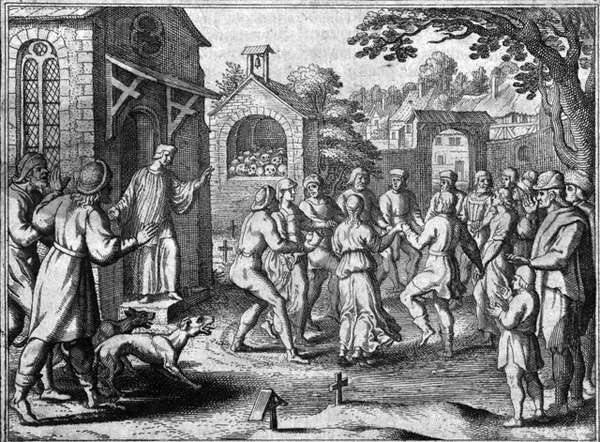
Many people would believe that the incidents described above are totally fictitious & imaginary, but the episode has been well documented in 16th century historical records. Although on a smaller scale, but similar epidemic of dancing has also been mentioned in historical records of Germany & Switzerland. 7 known incidents of such dancing epidemic occurred in the medieval era in the same and adjacent regions. The last known incident occurred in Madagascar in 1840.
Researchers have put forward many different theories to explain this Strasbourg dancing Plague, which most scholars believe was neither wilful nor voluntary. The most popular theory explaining this involuntary dancing plague/dancing epidemic is – an expression of mass hysteria (a mass psychogenic illness), caused due to excessive levels of psychologic distress. Disease and famine were both prevalent in Strasbourg at that time and the people were quiet sick & greatly anxious, so this theory may be a plausible explanation for the said epidemic.
Leontiasis ossea in common language is also known as Lion Face Syndrome. This rare condition is basically characterised by disproportionate overgrowth of the bones of Face and cranial bones (bones covering brain). This rare end result occurs as secondary manifestations of many other (sometimes equally rare) primary diseases. Some of these primary diseases that can cause the said effects are – Paget’s disease of bone ( a chronic disease of skeleton, that can cause bone weakening, deformity, fracture, pain and joint abnormalities), Fibrous Dysplasia (here fibrous tissue replaces normal bone & makes them weak, resulting in deformity), Hyperparathyroidism(primary pathology is excess secretion of parathyroid hormone from overactive parathyroid gland) and Renal Osteodystrophy (a spectrum of signs & symptoms produced due to chronic renal disease).

The abnormality is most commonly seen in the upper jaw area, where the bone keeps on increasing in size and grows into surrounding areas of the face. The cavities of nose, eye socket and mouth area can be affected causing destruction of normal anatomical structures & organs of these areas, which can cause severe compromise of the organs involved. Although less common, but bones of skull over the brain, can be involved with overgrowth. Loss of vision & blindness, difficulty in breathing and eating and pressure over the brain can even cause death.
Every human has 23 pairs of Chromosomes (total 46) in each cell of their body, with contribution coming from both of the parents. But congenital defects are caused, when the transmission of genetic material from parent to child does not occur properly. A chromosome 6 deletion is one such rare condition, that has recently sparked much interest in the medical community and researchers studying the phenomenon. The reason for this is because of a British Girl named Olivia Farnsworth.

The girl in context is a young girl, who suffers from the rare chromosomal defect of chromosomal 6 deletion, which makes her impervious to hunger, pain or need for sleep. This has earned her the nickname of “Bionic Girl”. She suffered a road traffic accident in which, she was run over and dragged down the street by a car, but the girl felt no pain and minimal injury. The little girl can go 3 days & nights without sleep, which is also almost impossible for anybody. But these gifts can also be troublesome sometimes. She once chewed through her own lip, without noticing, as she did not feel any pain. According to experts, there are only a 100 people like her (although Olivia is the only one with all the 3 main symptoms), in the entire world, who suffer from Chromosomal 6p deletion.
That is the name of the disease for people, who find it difficult to spell and pronounce, the accurate medical description of – Fibro dysplasia Ossificans Progressiva (FOP). This disease is very rare and it is most certain that the chances of someone you know, suffering from this disease is next to impossible. Only around 800 people have been found to have suffered from this disease, till date. The disease is caused due to gene mutation and the involved gene has been identified as ACVR1.
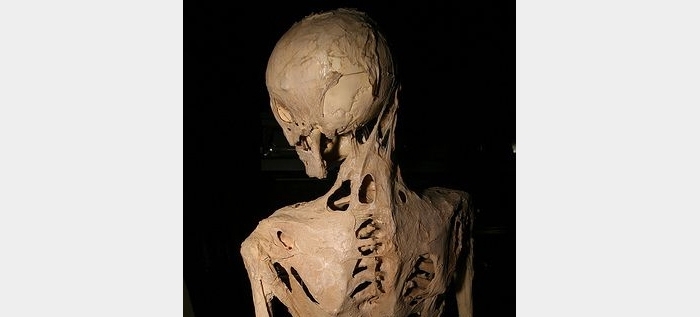
The mutation of the gene, causes impairment in the body’s repair mechanism, in which any injury is repaired by bone formation, in the area. Simple interventions like intramuscular injection and surgical biopsies can cause serious difficulties. Gradually bones start forming in muscles and other soft tissues. Joints of the body becomes fused. Hearing loss also occurs, due to involvement of bones in the internal ear. The person involved slowly starts resembling a statue, as soft tissues of the body are gradually turned into bones. The condition is not treatable and most of the people affected, die by 40 years of age.
This is a rather recently identified (2009) medical disorder in which a food allergy to red meat is developed after a Lone star tick bite. The onset of this disease is rather sudden, when a person who habitually eats meat suddenly one day starts developing health problems, after 3 to 6 hours of eating red meat. These symptoms can manifest as - hives (on hands, torso and feet), itchiness in the skin, nausea, dizziness, abdominal pain & diarrhoea, difficulty in breathing, headache & light-headed feelings. In very rare cases an extreme life-threatening allergic reaction, known as anaphylactic shock can also occur. University of Virginia’s researchers have found that people with alpha gal allergies, have a higher risk of heart diseases.
Alpha – gal is short for – Galactose alpha 1,3 galactose, which is a sugar molecule, that is present in all non-primate mammals (in their cell walls). The patients suffering from this condition, are people who love to stay outdoors, where they acquire Tick bites. Ticks in usual condition do not have Alpha gal, but after feeding on mammals like deer, cows, sheep or dog, it may acquire it. When these ticks’ bites humans, its saliva containing alpha gal, passes to the blood of the person concerned. The human immune system works to mount a defence system against these foreign elements. Afterwards, when the person involved eats any meat product (which contains alpha gal), then the body reacts against this compound as a foreign intruder, causing allergic manifestations. The allergy frequently wanes over time, but a repeat tick bite can cause the allergic manifestations to return.
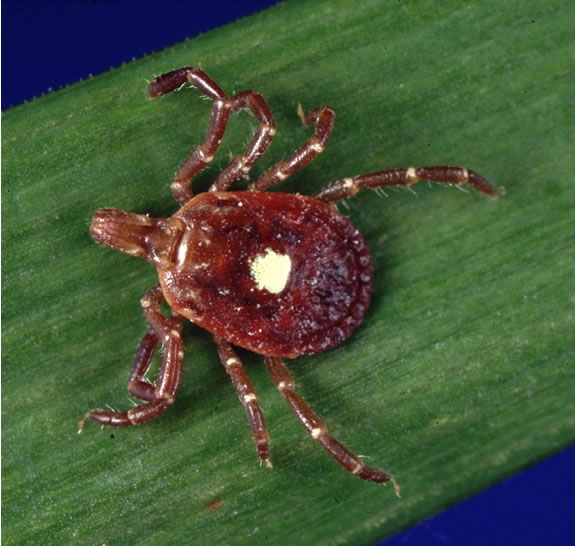
Although the classical association with lone star ticks has been shown in south eastern USA, but that is not so in other areas of the world, where this kind of alpha gal red meat allergy exists. In Southern Sweden and other parts of Europe, Asia, Australia and South Africa other Tick species have been implicated. Although Doctors and scientists are working hard to find solution to this problem, but the number of cases is on the rise. At present in absence of any definite cure - avoiding going to the woods outdoors (so as to avoid getting bitten by Ticks), or other general measures to avoid tick bite and avoid eating red meat for those, who are not able to change their outdoor habits, are the only possible treatment options available.
No, we are not talking about anything to do with romantic love, this article is strictly about medical disorders. It is rather a newly described medical heart disorder; its first description came from Japan in 1990. The topic of this discussion is Takotsubo Cardiomyopathy/Stress Cardiomyopathy. The condition is also known as Apical Ballooning syndrome. The main complaints of this disease are chest pain and shortness of breath, which may lead many to confuse it with a heart attack. However, in Broken Heart Syndrome there is no blockage of artery of heart by a blood clot, as happens in heart attack.
Takotsubo Cardiomyopathy or Broken Heart Syndrome in common language, is due to weakening of the heart’s main pumping chamber (known as left ventricle), which is caused due to severe stress, which can be either physical or emotional. Usually a serious accident, domestic violence, extreme fear & surprise, sudden illness, loss of someone close, financial loss and certain medications, can be some of the inducing factors. These events cause an increase in the level of stress hormones (like adrenalin), which adversely affects the heart, and causes changes in the muscle cells and blood vessels (coronary vessels). This ultimately results in impairment of function of left ventricle, and pumping action of the heart is affected.
Use of medications like epinephrine, which is very commonly used in treatment of severe allergic conditions (that may be caused by variety of allergens) or severe acute asthma attacks can be problematic in such individuals. Some of the other medications which may be dangerous are – Duloxetine (a drug used for treating depression or for nerve problems in diabetic patients), Venlafaxine (also used for treating depression) and Levothyroxine – a medication used for treating people with thyroid function deficiency.
Most of the people affected by this condition are over 50 years of age and women are more commonly involved than men. The decrease of oestrogen after menopause is the reason, that more than 90% of the involved patients are women between ages of 58 to 75 years. Although this condition can occur in anybody, but people with previous history of head injury or epilepsy (neurological disorder) or anxiety or depression (psychological problems) show a greater chance of developing Broken Heart Syndrome later in life.
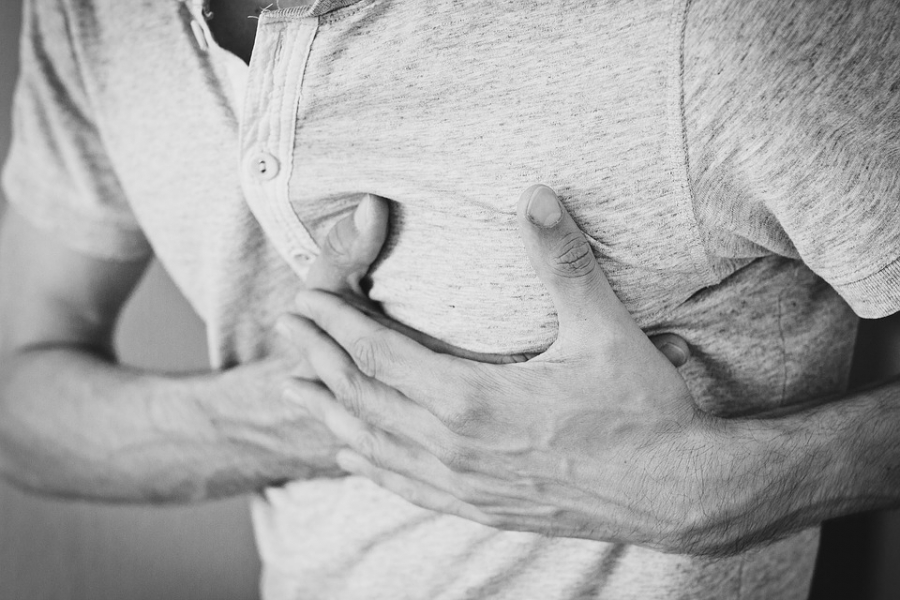
The treatment advocated for the condition are drugs like – beta blockers, which may have to be used for a long duration. Lifestyle alterations for identifying and managing stress are very important. There is not much that can be done to prevent broken heart syndrome. But the good news is that most of the people suffering from the condition recover quickly, without any severe complications.
There is a small probability that Takotsubo Cardiomyopathy or Broken Heart Syndrome, can occur again after the first occurrence. Unfortunately, this condition can be lethal in rare cases and this can be caused due to multiple reasons. Heart failure, low blood pressure, accumulation of fluids in the lungs, stoppage of heartbeat are few of the important causes.
This problematic sleep disorder is also known as Sleep Paralysis. The name of the disorder, comes from the feeling of the people suffering from this problem, who typically describe a witch (old hag) sitting on their chest. The person suffering from this problem gets up in the middle of the night, and may experience ghost like images, frightening sounds, and strange smells (hallucinatory features). The person may also feel weight on his/her chest, which creates difficulty in breathing, but they are unable to move or scream. The ability to smell, hear, feel and see are usually maintained. Needless to say, that this is rather an unpleasant experience, which most would want to forget.
During the attack of Sleep Paralysis, a person’s brain is in a transition phase between dreaming (sleep) and waking up. So, if a person wakes up in such a situation, his/her body is temporarily paralysed. This causes a frozen feeling. The association with REM dreaming stage of sleep is responsible for producing the hallucinations. Old Hag Syndrome or Sleep paralysis is also precipitated by excessive tiredness, sleep deprivation or disruption of sleep schedule. People who are over anxious, are more susceptible to it. This whole episode remains for only a small period, ranging from few seconds to a minute, but for the person suffering from this condition, the memory may last a lifetime.
Many people would say that Hyperlactation is not a disease and they are right to a certain extent. In hyperlactation, recently delivered mothers secrete milk in much greater amount than in the normal condition. Different causes of this condition have been identified. Milk production in women depends on hormonal actions. If the hormonal levels are altered, as may happen in abnormalities of pituitary glands, milk production may be altered in the breast. If milk is artificially expelled by squeezing or pumping out for any reason, the body may interpret it as an increased demand & as a result milk secretion increase. Rarely increased number of glands in the breast (more than the approximate 100 thousand number) and certain medications also can also result in excess of milk production by the new mother.
When breast milk is produced in excess condition compared to that of normal situation, as happens during hyperlactation, it can create some unique problems for both mother and the child. For the mother, the breast may feel heavier than normal, due to engorged breast. Besides leakage of milk & wetting of garments, it can also cause pain and mastitis (or breast inflammation). Forceful & excess milk ejection can cause difficulty for the baby to feed & they may turn away their heads. Faulty diet practice of the baby may manifest in different forms – low weight or excessive weight, excessive intestinal gas, abdominal colic and massive stools.
Consultation with a health practitioner may be needed in more serious cases. Modification in breast feeding practices, including change of nursing position & nipple shields can help in many situations. Careful monitoring for development of complication like mastitis should be watched out for. In extreme cases medications may be needed.

Many women ask, if it is possible to continue nursing with Hyperlactation Syndrome? The answer to that is a resounding yes. It is not just possible to do so, but this condition can also be used to help other new mothers, who suffer from decreased milk secretion. Many women with Hyperlactation syndrome donate their milk. This can be used to feed other people’s babies – who were born prematurely, or have certain medical conditions like – allergy to formula milk. In fact, there is a woman on Oregon (USA), who has Hyperlactation Syndrome and she has donated 609 gallons of breast milk, in 2 years, for feeding babies of other women, who had desperate need for it. Sometimes, milk of human kindness does work miracles.
Methemoglobinemia is a blood disorder, where methaemoglobin – a special form of haemoglobin (protein in red blood cells that carries and distributes oxygen throughout the body) is present in a higher level. This impairs the oxygen supply to the various organs. This condition can be either transmitted from one generation to the next or can be caused as an effect of certain medicines, chemicals or foods. The symptoms can vary depending on the level of methaemoglobin present. These symptoms can be difficulty in breathing, headache, tiredness and change of mental status. Levels higher than 50% can even cause convulsion, coma and death.
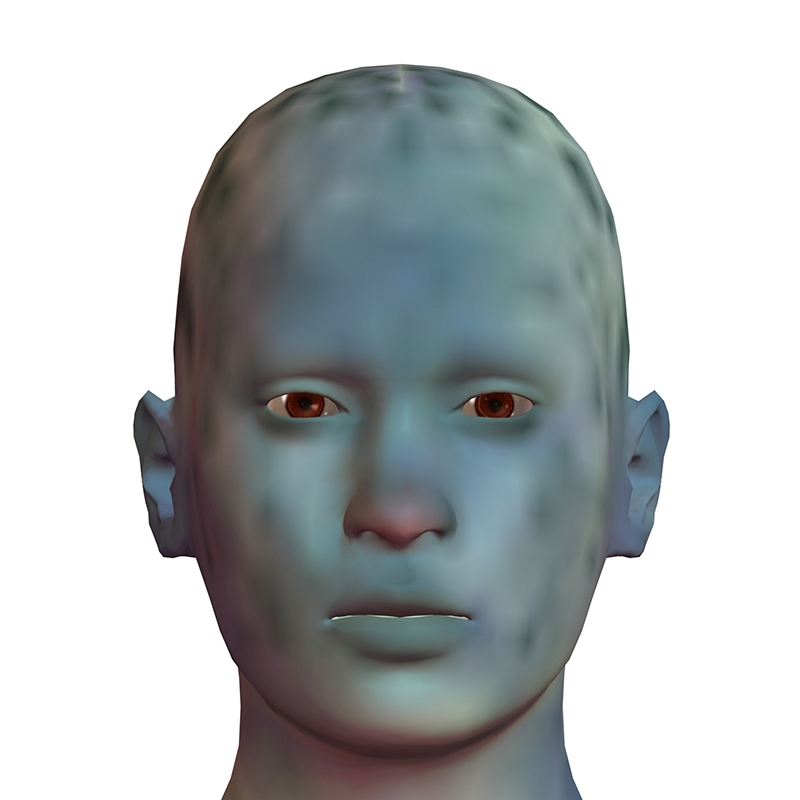
Bluish discolouration of the skin and mucous membrane due to Cyanosis can cause some characteristic features. A family that had lived in Kentucky (USA) for many generations and commonly known as “Blue Fugates of Troublesome Creek” suffered from the rare genetic Methemoglobinemia, which gave a characteristic bluish tinge to the skin colour of the family members. The extensive affliction of blue skin, seen in the Fugate family members, was because of consanguineous marriage in their family tree. A detailed study of their ancestry & health condition, brought many important factors of this rare disease to light.
It would be wrong to end this article, without mentioning Syndrome K. The “disease known as Syndrome K” first came to notice in Italy during the second world war, when from September 1943 to June 1944, German Nazi forces controlled the city of Rome. A mysterious illness, which was highly feared and believed to be infectious made many people to be quarantined in the Fatebenefratelli hospital of the city.
Very few people actually knew that there was no reason to get scared, as the mysterious disease was totally fictitious, and it was a creation of genius minds. Vittorio Sacerdoti, Giovanni Borromeo & Adriano Ossicini were the doctors, who diagnosed certain people with the “newly discovered” disease - “Syndrome K”. The doctors had specified, that all patients suffering from Syndrome K, should be put in a quarantined ward, to stop the spread of the disease and this was where these patients – all of whom were Jewish refugees, were kept. These people were all of good health, and kept in quarantined conditions to protect them from their Nazi oppressors, who avoided entering the hospital, scared of contacting an unknown disease.

The entire medical staff and the doctors kept the secret for the next 60 years, when Fatebenefratelli hospital was recognized as safe haven for Jews, helping them to escape Nazi persecution. In June 2016, the hospital was named “House of Life” in a ceremony attended by the 96-year-old Dr Ossicini and some of the people, whose life he had saved many years before.
In ancient times, these rare and unknown diseases were not just a reason for a person’s physical and mental suffering, but also evoked hostility from fellow human beings, because of superstition prevalent in old days. Although it is not possible to go back in time and correct all the misfortune that people have suffered from, but it is always possible to build better and brighter future. As it is the brightness of knowledge and awareness, which is the light that can drive away the darkness of ignorance and dangers that rises because of it. This article was a short but a sincere attempt towards taking a small step in that direction.
(Disclaimer - This article is not a substitute for a direct face to face consultation with an experienced medical practitioner. It is just for raising awareness for rare and unknown diseases, which also are Strange diseases that people hardly know about.)